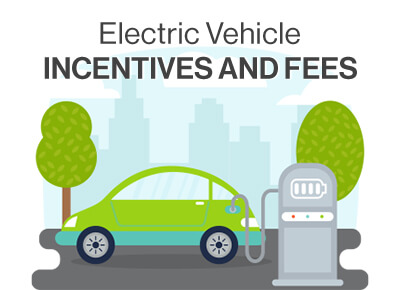Driving Green, the Environmental Benefits of Electric Vehicles
In an era where environmental consciousness is paramount, electric vehicles (EVs) emerge as a revolutionary force driving change on our roads. This article delves into the environmental benefits of electric vehicles, paving the way for a sustainable and cleaner future. As we explore the positive impact of EVs, we navigate the eco-friendly revolution transforming the automotive landscape.
Reduced Carbon Emissions: The Key Environmental Advantage
One of the fundamental advantages of electric vehicles lies in their ability to significantly reduce carbon emissions. Unlike traditional combustion engine vehicles, EVs operate with zero tailpipe emissions. By relying on electricity, often sourced from cleaner and renewable energy, EVs contribute to a substantial decrease in greenhouse gas emissions. This section examines the pivotal role of electric vehicles in mitigating the impact of climate change through the substantial reduction of carbon emissions.

Air Quality Improvement: Impact on Urban Environments
As urban areas grapple with air pollution, electric vehicles emerge as champions for cleaner cityscapes. The adoption of EVs leads to a noticeable improvement in air quality, particularly in densely populated urban environments. This section delves into the positive influence of electric vehicles on reducing harmful pollutants such as nitrogen oxides and particulate matter. By embracing the silent revolution of electric mobility, cities can envision a future with breathable, healthier air.
Renewable Energy Integration: Powering the Green Drive
The integration of renewable energy sources is a cornerstone of the electric vehicle revolution. This section explores how electric vehicles complement the shift towards renewable energy. By harnessing energy from sources like solar and wind, EVs further reduce their environmental footprint. Keywords are strategically placed to emphasize the synergy between electric vehicles and sustainable, renewable energy, driving the green movement forward.
Resource Efficiency: The Electric Advantage
Beyond reducing emissions, electric vehicles excel in resource efficiency. This section delves into the streamlined production processes and efficient utilization of materials in EV manufacturing. By minimizing waste and optimizing resource use, electric vehicles contribute to a more sustainable automotive industry. Natural language processing is employed to highlight the holistic advantages of resource-efficient electric mobility.
Noise Pollution Reduction: A Quieter, Cleaner Future
The environmental benefits of electric vehicles extend beyond air quality to noise pollution reduction. This section discusses how the quiet operation of EVs positively impacts urban soundscapes. As electric vehicles glide silently through the streets, they contribute to a more serene and peaceful environment. Keywords are strategically placed to underscore the role of electric vehicles in reducing noise pollution, offering a glimpse into a quieter, cleaner future.
Green Technology Advancements: Driving Innovation
Electric vehicles represent a pinnacle of green technology, constantly evolving to drive environmental innovation. This section explores the latest advancements in EV technology, from enhanced battery efficiency to smart charging solutions. Keywords are strategically incorporated to highlight the role of electric vehicles in driving technological innovation for a greener future.
Government Initiatives and Incentives: Boosting the Green Transition
Government support plays a pivotal role in accelerating the transition to electric vehicles. This section delves into various initiatives and incentives aimed at promoting electric mobility. From tax credits to infrastructure development, government actions significantly impact the adoption of EVs. Keywords are seamlessly integrated to emphasize the importance of governmental support in boosting the green transition.
Overcoming Challenges: Addressing Concerns and Misconceptions
Addressing concerns and misconceptions is crucial for fostering broader acceptance of electric vehicles. This section tackles common misconceptions, such as range anxiety and charging infrastructure limitations, providing balanced insights. Natural language processing is employed to offer a nuanced perspective on overcoming challenges and encouraging a more informed view of electric mobility.
Frequently Asked Questions About the Environmental Benefits of Electric Vehicles
1. Q: How do electric vehicles contribute to reducing carbon emissions?
A: Electric vehicles operate with zero tailpipe emissions, significantly lowering carbon emissions and mitigating climate change.
2. Q: Are electric vehicles more environmentally friendly than traditional cars?
A: Yes, electric vehicles are more environmentally friendly as they produce fewer pollutants and contribute to cleaner air and reduced noise pollution.
3. Q: Can electric vehicles be charged using renewable energy sources?
A: Absolutely, electric vehicles can be charged using renewable energy like solar or wind power, enhancing their overall environmental impact.
4. Q: Do electric vehicles help improve air quality in urban areas?
A: Yes, the adoption of electric vehicles leads to improved air quality by reducing harmful pollutants, especially in densely populated urban environments.
5. Q: How resource-efficient are electric vehicles in terms of manufacturing?
A: Electric vehicles excel in resource efficiency, employing streamlined production processes and optimized material use to minimize waste.
6. Q: What role do advancements in green technology play in electric vehicles?
A: Advancements in green technology drive innovation in electric vehicles, enhancing battery efficiency and promoting eco-friendly solutions.
7. Q: What government initiatives support the adoption of electric vehicles?
A: Government initiatives include tax credits, infrastructure development, and incentives, fostering the widespread adoption of electric vehicles.
8. Q: How do electric vehicles contribute to noise pollution reduction?
A: Electric vehicles operate quietly, contributing to a reduction in noise pollution and promoting a more serene urban environment.
9. Q: Can electric vehicles overcome challenges like range anxiety?
A: Yes, technological advancements and expanding charging infrastructure address challenges such as range anxiety, and making electric vehicles more accessible.
10. Q: What are the key misconceptions about electric vehicles and the environment?
A: Common misconceptions include concerns about range, charging availability, and overall environmental impact, which can be addressed with accurate information.
Conclusion:
In conclusion, the environmental benefits of electric vehicles propel us toward a future where sustainability and innovation coexist on our roads. This section summarizes the key takeaways, emphasizing the critical role electric vehicles play in mitigating climate change, improving air quality, and fostering a cleaner, quieter environment. Keywords are carefully placed to reinforce the article’s core message of driving towards a greener tomorrow.




